

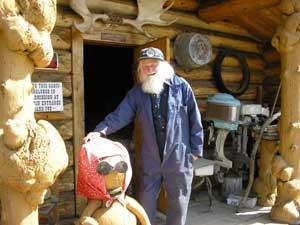 This is Marl Brown. Chief, cook and bottle washer and a very interesting character, handyman, inventor and collector of antique cars. He's probably the reason this museum's existence. A must stop and see when on the AH.
|
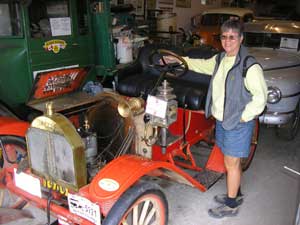 Of the many antique cars he owns, this one is a gem. It's a 1909 Brush. A British car made in Detroit till 1915. It was brought to Calgary by a lady and bought by a doctor who then sold it to Marl's father for $1.00 (bill of sale available). It's got a wooden frame, wooden axles! and wooden wheels, all original and it runs!
|
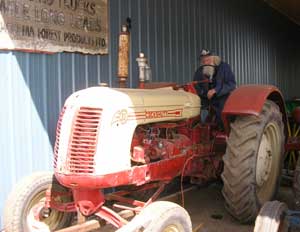 Marl takes care of everything in the museum and as he says, if it doesn't run, I don't want it. Here's he just started for us a 1949 Cockshutt tractor model "35". Model "35" is very rare as they were only built for 1 month. They combined model 30 front ends with model 40 rear ends as they moved to model "40s". Well this things has it's battery charged for a day and when Marl turned the key, it fired on the first turn. |
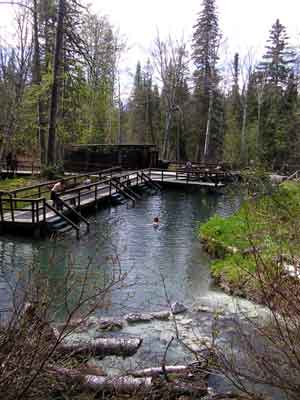 |
Alpha Pool Hot Spring (The main pool) The source waters of this Pool are 53 degrees Centigrade, and have the strong smell of sulphur and it bubbles out of the ground at the bottom of the picture to the left. Pool water mixed with the cooler spring waters produce pleasant temperatures ranging from 40 to 49 degrees C. It was only about 3-4 feet deep with 3 sections ranging from warm to medium to hot. You had to stir up the water as sometimes it got too hot. The bottom had small round stones, great for a foot message. This was also the site of a major construction camp for the AH. The natural hot springs were used by the troops daily, although once a week they cleared out, leaving the hot springs to the women of the camp. We enjoyed going in twice a day and then sat by the campfire. It's a hard life. Below is another Hot Spring which is very deep and has an even temperature. It was actually a much more comfortable temperature but the bottom was silt! |
 |
Pierre baked a chocolate cake for Denis' Birthday. He was a bit upset at the number but I told him he was just a day older. |  |
|
It was unbelievable to see. Watson Lake's famous collection of signs started in 1942 by Carl Lindley, a homesick highway construction worker. He erected a sign pointing to his home town of Danville, IL. The cluster of sign has been reorganized and new signs are added to the collection each year. What you see is only the front row... there are many more rows of posts behind these. The town of Watson Lake maintains the grounds.1991 had 12,000 signs, 2004 - 54,000 signs and today we added our sign to it. |
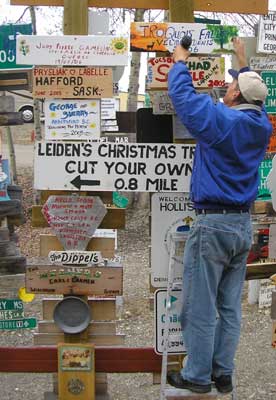 |
We have nailed our sign next to our travelling friends
from Quebec. Since we do not have a home right now, we decided to use
Iroquois Falls since we were both born there. To view the sign you would go
on the hill between the visitor's centre and the highway and look towards
the highway! We also saw two other signs there. One was from Curly & Dolly Faubert in 1997 and there was one from Leanne & Blondie Lachapelle beside it!.. small world as we had met a Quebec snowbird last Fall who Winters in Texas and is neighbour to Blondie. |
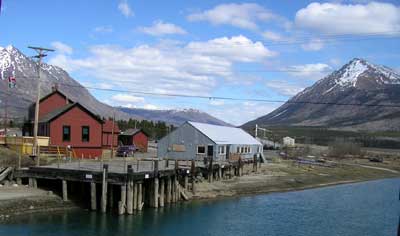 |
Carcross (Caribou Crossing) during World War
II, played an important roll in Alaska Highway construction as it connected
to the port of Skagway via the famous White
Pass Rail (gold rush of 88-89) and gave the U.S. Army access to the
Yukon's interior. By Spring 1942, the war moved
much closer to home when 1200 black troops of the 93rd Engineers stepped off
the train. Over 10,000 soldiers would pass through town and Carcross became
the distribution centre for road construction east to Teslin and northwest
to Whitehorse. Here you see the old train station and docks on the river, which is also the headwaters of the Yukon river. Next is a picture of the White Pass Railway bridge |
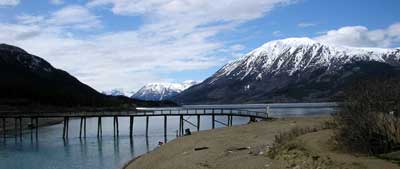 |
That fall, a contractor for the Canol pipeline (associated to the AH), Bechtel-Price-Callahan, set up a supply camp near the railway station. It was a busy time. Up to 25 trains a day rolled through town. Army trucks met the trains, then carried supplies to outlying road camps. Military planes flew in and out of the small airport. There was no lack of work for the local people. Johnnie Johns, a well known big game outfitter, leased and sold horses to advance parties for both Alaska Highway construction and the Canol Project. Johnnie and Peter Johns also guided army surveyors through the country they knew so well. Other aboriginal people worked at a variety of jobs, ranging from cutting logs for telephone poles to chauffeuring a general up and down the barely-completed highway. The town's services were modernized. Civilian contractors supplied many buildings with electricity and year-round piped water. Communications also improved when the gold rush era telegraph line along the railway was replaced by an eight-wire telephone/telegraph service. The "Friendly Invasion" also brought tragedy to Carcross. Many Tagish and Tlingit people were infected with diseases introduced by the soldiers. Despite the efforts of army doctors and devoted nursing by family members, many Indians died from measles, chicken pox, and dysentery. The soldiers and contractors departed as quickly as they had arrived. Their legacy was the network of roads that permanently altered the character of the community. |
|
|
 |
Carcross Desert is known as the smallest desert in the world. This area was originally covered by a large glacial lake. As the glaciers retreated, causing lower water levels, sandy lake bottom material was left behind. Strong prevailing winds from Lake Bennett have constantly worked this sand, making it difficult for vegetation to become established. Species of plants that have survived include Lodgepole Pine and Kinnikinnick. |
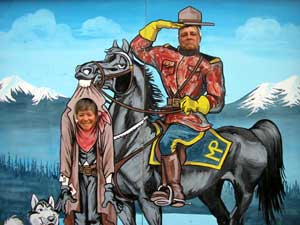 |
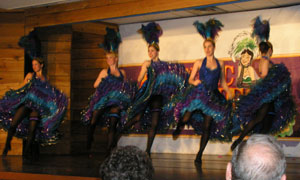 We went to see the "Frantic Follies", they were really funny and entertaining. Sorry pictures are not to good. I think they were moving to fast and the setting were not changed on the camera. |
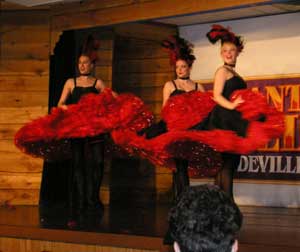 |
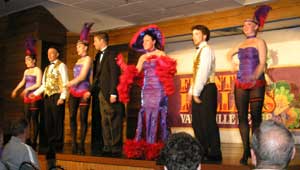 The evening was very enjoyable, they had us laughing nearly all evening.
|
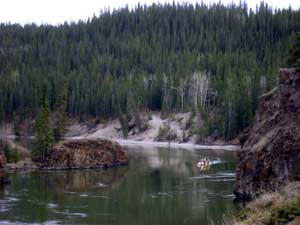 Canoeist at Mile Canyon, just outside of Whitehorse.
|
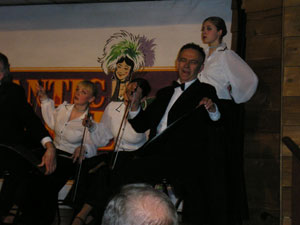 An old Whitehorse tradition, playing the "Saws". |
We had stayed at the Pioneer RV Park just outside of Whitehorse and they were very good to us. They have nice wooded section above and another section of parking without trees in front of the highway, below. They had sent us to see the "Frantic Follies" for free. This was a complete performance rehearsal prior to the grand opening.
|
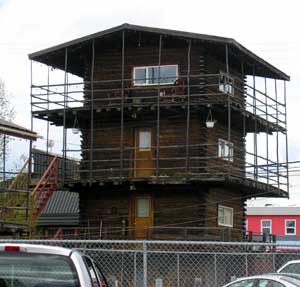 Log cabin high-rise. |
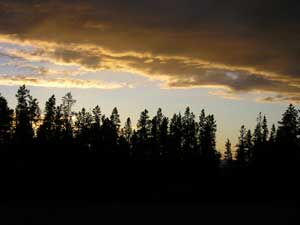 |
It is so strange to see a show and go outside at midnight and it is still light out. It sort of gives you more energy. I cannot imagine what it is like with 20 hrs. of twilight. |
| Tuesday, May 23, 2006. The four of us went to see "Devinchci Code". I considered it only as a movie and found it very entertaining. |
|
The first settler were the Tlingit Indians. In 1741, the first know meeting between white men and Tlingit took place when a Russian ship anchored west of Haines. A brisk fur trade began thereafter with the Spanish, English, Russians and Americans. Later cashing in on the gold-seekers Jack Dalton established a tool road along one of the Tlingit routes into the interior. Parts of the Dalton Trail eventually became the Haines Highway into Canada. |
 Interesting things to see on the beach.
|
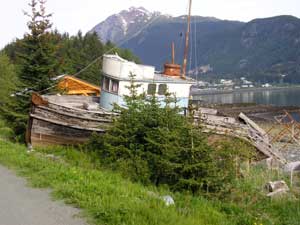 A beached whaleboat.
|
 The Sheldon Museum and Culture Center has a very good display of the Tlingit Culture showing how artistic and resourceful they were. These boxes are of one sheet with folded edges. Their blankets and baskets were beautiful. |
|
|
|
 |
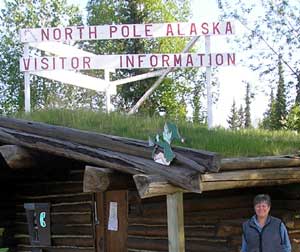 |
|
 |
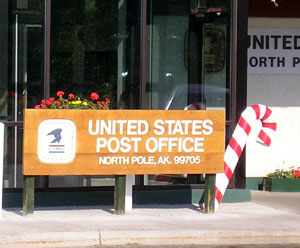 |
 |
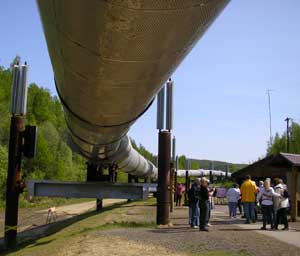 The Alaskan Pipeline. It travels around 600 miles long, some of it about ground and some below ground. It is actually not anchored down and on pillars in case of earthquake.
|
 This is the most northern we have gone and it seems to be light all the time, even when it's dark.. It's strange but I like it. I feel I have so much more energy. Denis is not fussy about it. He claims he cannot sleep properly. I know once his head hits the pillow he is snoring. He just has to close his eyes.
|
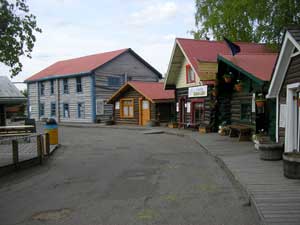 Pioneer Park. 44 acre, historical pioneer theme park and family recreation area, was built in 1967 for Fairbanks 100th. anniversary of the state's purchase from Russia for round 7 million dollars, what a steal. These homes where built in the early 1900's and instead of knocking them down they were relocated to this park and within are people re-enacting the people who lived in them and some are now gift stores. |
|
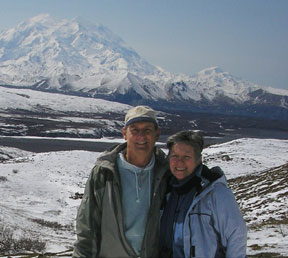 Finally after 3 days we were able to see Mt. McKinley. We were lucky the weather cleared or we would have had to pay $24.00 and see a whole bunch of clouds. The mountain if measured from the base is taller then Mount Everest but there are a few higher mountains in the world this one is only 20,320 ft. high. |
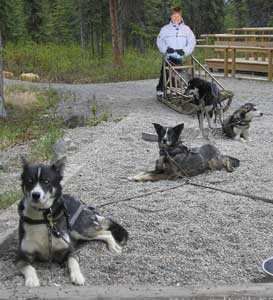 We went to see a mushing demo while at the park. |
 While leaving the visitors center at the park I was greeted with a visitor. |
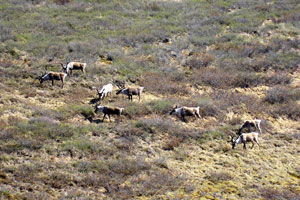 |
|
|
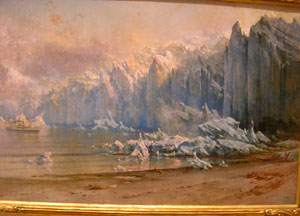 There was so much art and history about Alaska here that you could not cover it in a day. |
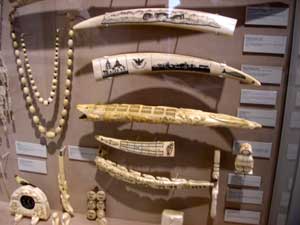 Beautiful carvings out of Walrus/Mammoth tusks. |
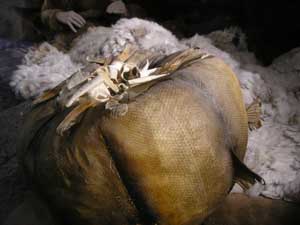 The Athabaskin Indians made bags from fish skin. |
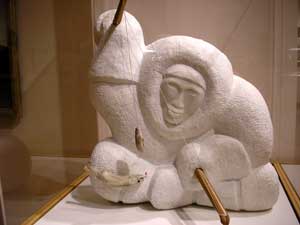 Carvings out of Marble |
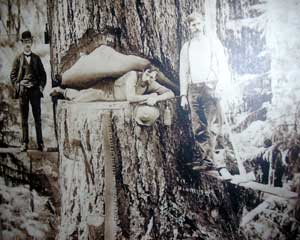 Pictures showing the past. |
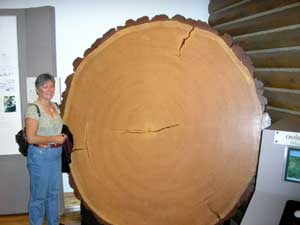 This tree is 600 years old. |
| There was so much to see here that I would come back again. |
 There are about 5 airports here. There is always a plane in the sky. |
|
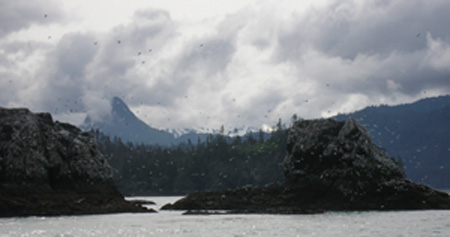 |
On the way to Saldovia we saw Islands full of different birds. |

|
Schools of otters. They love to float on their backs. On the right, a close-up of an otter. |
 |
 |
Saldovia was a busy, thriving town in 1898 with many stores, a modern hospital, good schools and Russian Orthodox and Methodist churches. The Alaska Steamship Company made regular stops with freight, mail and passengers. Before the Sterling highway linked Homer with the rest of the world, Seldovia was the main town in this area and one of the country's busiest seaports. Now, due in part to the 1964 earthquake and changes in the fisheries & transportation systems, Seldovia is a quiet little village. They have a annual Chain Saw Carving Contest. Summer Solstice Music Festival and a 4th. of July Parade, pancake breakfast, and rubber ducky race. |
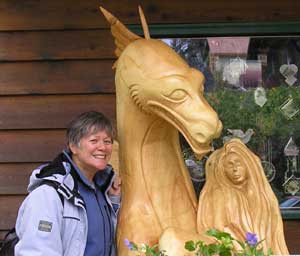 |